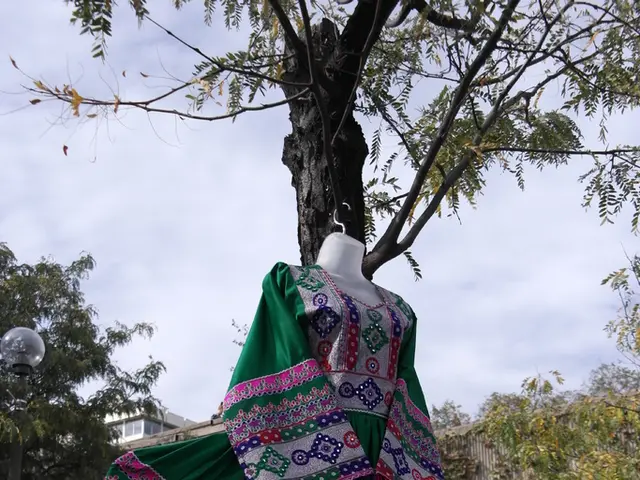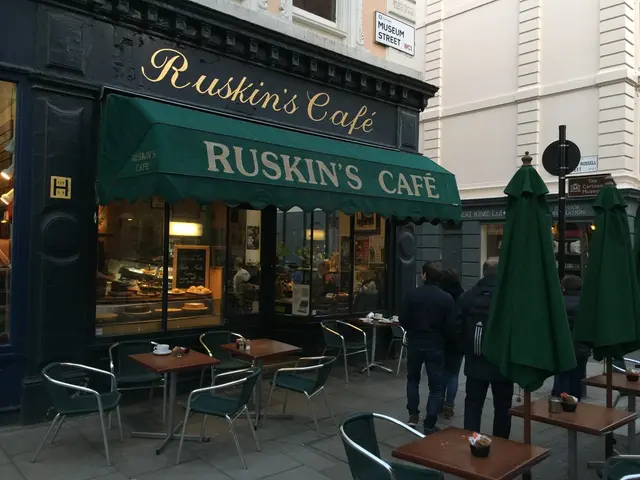Exploring Copenhagen: Essential Insights for Visitors
Fire and Ice: Discovering the Heart of Copenhagen
From the vibrant canals to the hip cafes, Copenhagen, Denmark's capital city, is a mesmerizing blend of history and modernity. With its stunning architecture, mouthwatering cuisine, and bucket-list attractions, this city is a bustling playground that caters to every taste.
Looping along the harbor at Nyhavn, biking through its eco-friendly streets, or experiencing the thrill of Tivoli Gardens, Copenhagen promises an unforgettable adventure. As a proud Dane, I've visited this city numerous times, and leaving always feels like pulling a piece of my heart away. After countless explorations and many trips down memory lane, I'm eager to share my tailored guide to travel in Copenhagen.
Copenhagen's Colors:
Copenhagen is divided into several unique districts, each with its own distinctive charm.
Indre By, the city's ancient heart, is a must-visit. A magic carpet ride through European history, it boasts magnificent landmarks like Nyhavn, Strøget – Europe's longest pedestrian shopping street – and the royal palaces. This area, filled with museums, culture, and fine dining, is the perfect playground for first-time travelers.
Moving westward, Vesterbro was once a grittier neighborhood, but, since the nineties, it has been transformed into one of Copenhagen's trendiest spots. A haven for foodies, this area houses vibrant nightlife, hip cafes, and the Meatpacking District's culinary delights.
To the east, Østerbro showcases a chic and family-friendly side of Copenhagen. With broad boulevards, verdant parks, and stylish eateries, it is home to famous sights like the Little Mermaid and Fælledparken, a vast green oasis perfect for relaxation.
Nørrebro, further north, is a lively artistic hub with a youthful vibe. Its streets are lined with independent boutiques, diverse eateries, and renowned hangout spots like Superkilen Park.
Across the water lies Christianshavn, brimming with historic canals and a scenic beauty. The area's most famous attraction is Freetown Christiania, an unusual, self-governing community with an alternative culture. Established in 1971, it functions under its own set of communal regulations, separate from Danish law.
Copenhagen's Treasures:
Copenhagen's perfect marriage of cultural legacy and modern allure makes it an exhilarating destination.
Strøget, a major pedestrian street located in the heart of the city, is a delightful walk from the center to the waterfront. With shopping, dining, and passage through some of the city's most popular attractions, it is an ideal place to socialize or explore.
Nyhavn, the city's iconic waterfront, is a must-see. This picturesque stretch features colorful buildings and restaurants, and offers canal tours for those keen on a different perspective of the city.
No trip to Copenhagen is complete without spending time at the legendary Tivoli Gardens. Tivoli, one of the world's oldest amusement parks, was founded in 1843. The park is more than just rides, boasting concert venues and breathtaking natural scenery. Visitors are enchanted by its iconic wooden roller coaster, Rutschebanen, which dates back to 1914. When visiting Tivoli, make sure your trip falls between April and November, as the park is only open during the summer and fall seasons.
The Louisiana Museum of Modern Art, located just north of the city, is an internationally esteemed museum. Featuring contemporary and modern art from the 20th and 21st centuries, its stunning seaside location and enchanting sculpture garden make it a must-see day trip. Another exceptional museum, Workers Museum (Arbejdermuseet) in Indre By, provides insight into Denmark's labor history and working-class life. Housed in a historic 19th-century workers' hall, the museum offers a detailed look at how workers and their families lived, worked, and fought for their rights over the decades.
Copenhagen's Voyages:
Transportation in Copenhagen is streamlined and technologically advanced.
The Rejsekort is a universal travel card used across Denmark for public transportation. With its tap-in-tap-out system, it simplifies travel by allowing seamless transitions between different modes of transport within the country. The Rejsekort is available on mobile devices using either the DSB or Rejsekort apps.
Copenhagen's metro, a fully automated system, operates 24/7. Consisting of four lines, it whisks passengers to key areas such as the city center, the airport, and suburban districts. Known for its high frequency, with trains arriving every few minutes, the metro is an ideal mode of transportation.
Buses, night buses, and ferries extend the reach of the metro, making travel across the city a breeze, even along the waterfront. For commuting to and from suburban areas, the S-Train (S-Tog) is a suitable option, covering a broader distance than the metro. Regional trains connect Copenhagen with other Danish cities and international destinations, such as Malmö in Sweden.
Copenhagen's dedication to biking is renowned; with over 390 kilometers of dedicated bike lanes, cycling is a top choice for many locals. The city offers bike-sharing programs, and visitors can rent a bike to traverse the city with ease.
The Allure of Copenhagen:
In a city steeped in history and pulsating with modernity, Copenhagen holds a special allure. With every visit, I find myself falling in love with new charms and rediscovering old favorites. I have no doubt that this will be your experience as well.
/Share on Facebook /Share on X /Email this Story /Print this Story
- capital city
- Copenhagen
- Denmark
- History
- innovation
- Nyhavn
- Tivoli Gardens
- Viking Age
Enrichment Data:
### Overall:Copenhagen's neighborhoods offer a diverse range of attractions and experiences. Here's a breakdown of the top things to do and see in each area:
Indre By (Inner City)
Indre By is the heart of Copenhagen, known for its historic and modern architecture. It is home to many iconic landmarks:- Nyhavn: A picturesque harbor with colorful 17th- and 18th-century townhouses, offering a lively atmosphere with restaurants, bars, and boat tours.[1][4]- Royal Danish Theatre: A cultural hub with performances ranging from ballet to opera.[4]- Rosenborg Castle: A beautiful 17th-century castle housing the Danish Crown Jewels.[5]
Vesterbro
Vesterbro is known for its vibrant cultural scene and nightlife:- Kongens Enghave: Offers a mix of trendy bars and restaurants.- Vesterbrogade: Known for its shopping and dining options.- Carlsberg Brewery: A historical brewery turned museum, offering tours and tasting sessions.- Meatpacking District: A former industrial area transformed into a trendy spot with bars, restaurants, and clubs.
Østerbro
Østerbro is a family-friendly area with green spaces and cultural attractions:- Parken Stadium: Home to the Danish national football team.- Østerbro's Fælledparken: A large park perfect for picnics or outdoor activities.- Little Gunnar: A popular spot for breakfast and brunch.- Østerbro's shopping streets: Offer a variety of boutiques and local shops.
Nørrebro
Nørrebro is known for its local culture and vibrant community:- Nørrebro's shopping streets: Asser Thorngrensgade and Elmegade offer unique boutiques and vintage shops.- Ravnsborggade: Known for its street art and independent cafes.- Nørrebro Park: A large park with outdoor activities and a skate park.- The Assistens Cemetery (Kierkegaards Kirkegård): A historic cemetery where famous Danes like Hans Christian Andersen and Søren Kierkegaard are buried.
Christianshavn
Christianshavn is a charming area known for its bohemian vibe and historic canals:- Freetown Christiania: A unique, self-governing community famous for its alternative culture and art scene.[5]- Christianshavn Canal: Offers boat tours and picturesque views.- Church of Our Saviour: Features a distinctive spiral tower offering panoramic city views.[5]- Christianshavns Torv: A lively square with cafes and shops.
Each neighborhood offers a distinct experience, from cultural attractions to local lifestyle insights.
- The city of Copenhagen, Denmark's capital, possesses a unique blend of history and innovation, making it a captivating destination for visitors.
- From the enchanting landmarks in Indre By, like Nyhavn and the royal palaces, to the trendy foodie scene in Vesterbro, each district of Copenhagen showcases its own charm.
- A visit to Tivoli Gardens, one of the world's oldest amusement parks, is essential for a taste of the city's rich culture and the thrill of its attractions.
- Discovering Copenhagen's treasures, such as the Louisiana Museum of Modern Art and Workers Museum, adds depth and insight into the city's history and contemporary art scene.






